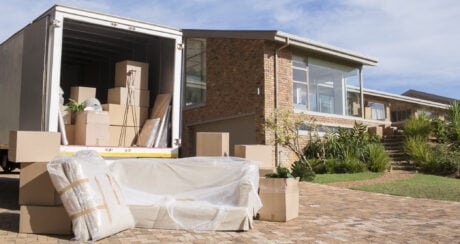Property investing is very popular in Australia, whether it’s to obtain a holiday home or generate passive income.
An investment property can be a strategic wealth building tool, but it’s important to make sure you can afford the spectrum of expenses involved, including stamp duty, insurance and future repairs.
Can I afford an investment property?
Before purchasing an investment property with an investor home loan, there are two major costs to consider.
Deposit
Usually, a lender will require a deposit of 20% of the investment property’s value to avoid paying Lenders Mortgage Insurance.
For example, if you plan to buy an investment property worth $500,000, you would need a deposit of $100,000. This deposit can be made up of cash savings or equity you have built up from your existing property portfolio.
Repayments
The remaining 80% of your loan will need to be paid back in installments to your lender with interest. Online calculator tools can help you calculate what your mortgage repayments may look like based on the size of your loan.
This process is also known as calculating your borrowing power which is an estimate of what mortgage you can afford to pay back based on your income, expenses, and assets.
One way to do this is to meet with a lender and get pre-approval, where a lender assesses your financial situation and agrees to lend you a specific amount for the purchase of a property.
If you have a property in mind that you hope to purchase, seeking pre-approval from a lender will let you know if it’s within your budget. Alternatively, you can seek pre-approval to set yourself a limit or target price and then search for a property.
Of course, this budget also needs to align with your investment goals, which may be influenced by factors such as:
- Property type (apartment, house, townhouse etc.)
- Location
- Lifestyle
- Market conditions
- Gearing strategy.
Finally, you also need to consider the additional and ongoing costs of owning an investment property outside of your mortgage, which may include:
- Stamp duty
- Land tax
- Building and pest inspection
- Insurance
- Solicitor/conveyancing fees
- Council fees
- Property management
- Repairs and maintenance
- Body corporate fees
- Advertising.
How to increase your investment property borrowing power
- Build equity by focusing on paying off your current mortgage, or increasing the value of the property.
- Increase your income.
- Pay off other debts to improve your credit score.
- Cut your expenses.
- Lower your target price range.
How much does an investment property actually cost?
How much you can borrow will depend on your own financial position rather than a predetermined limit.
Using data from the ABS, you can get an idea of how much property investors are typically borrowing. In February 2024, there were 14,789 new investor loans issued with a total value of $9.53 billion. This would mean the average investor is borrowing $644,397.
Using the Domain House Price Index, you can also estimate how much you would need to borrow to purchase a house or unit in various parts of Australia.
Example: Median house costs in December 2023 with an LVR of 80%
| Location | House Price | Deposit | Loan |
|---|---|---|---|
| Sydney | $1,595,310 | $319,062 | $1,276,248 |
| Melbourne | $1,047,273 | $209,454 | $837,818 |
| Brisbane | $888,285 | $177,657 | $710,628 |
| Adelaide | $875,034 | $175,007 | $700,027 |
| Canberra | $1,024,214 | $204,843 | $819,371 |
| Perth | $742,390 | $148,478 | $593,912 |
| Hobart | $706,728 | $141,345 | $565,382 |
| Darwin | $640,806 | $128,161 | $512,644 |
| Combined Capitals | $1,094,539 | $218,908 | $875,631 |
| Combined Regionals | $585,765 | $117,153 | $585,765 |
Example: Median apartment costs in December 2023 with an LVR of 80%
| Location | Apartment Price | Deposit | Loan |
|---|---|---|---|
| Sydney | $795,994 | $159,199 | $636,795 |
| Melbourne | $579,506 | $115,901 | $463,605 |
| Brisbane | $524,202 | $104,840 | $419,361 |
| Adelaide | $484,407 | $96,881 | $387,525 |
| Canberra | $625,597 | $125,119 | $500,477 |
| Perth | $387,218 | $77,443 | $309,774 |
| Hobart | $535,426 | $107,085 | $428,340 |
| Darwin | $371,096 | $74,219 | $296,876 |
| Combined Capitals | $638,372 | $127,674 | $510,697 |
| Combined Regionals | $449,662 | $89,932 | $359,729 |
What determines how much you can borrow?
Income and expenses
As with any form of credit, lenders are concerned with serviceability – your ability to pay the loan back. Your income and expenses will be part of this assessment and you will be required to provide evidence, including:
- Payslips
- Tax returns
- Bank statements
- Other information regarding existing debt
- Credit history
Just like other loans, poor credit history, unemployment or poor spending habits could impact your chances of securing an investment loan, as lenders are legally obligated to only provide loans to those they believe can make the necessary repayments.
Deposit size
As already mentioned, a 20% deposit is a target that may help you avoid paying LMI to secure a loan. But having an even larger deposit may improve your chances for investor loan approval as it means you are borrowing less, and will save you money on interest over the term of the loan.
Some lenders offer loans with as little as a 5% deposit, however these are approved on a case-by-case basis.
Current equity
An advantage for investors over first home buyers is that you may be able to use existing equity in your current property as security on the loan for an investment property. Equity is the difference between a property’s value and the amount you still owe on the home loan.
For example, if you live in your current home and it is valued at $500,000, and you have $200,000 remaining on your mortgage, you have $300,000 in equity.
How much equity you can use will vary between lenders. For example, NAB allows you to use 80% of the property value minus the mortgage.
In the scenario above, you have a $500,000 property. 80% of that would be $400,000. Subtracting your $200,000 remaining mortgage, leaves you with $200,000 in usable equity.
Property use/rental yield
Your strategy for your investment property can also influence your application. Lenders will usually want to know the intended use of the property, as this can impact interest rates and lending criteria.
For example, you may be looking to invest to generate passive rental income, or negatively gear it for tax deductions. These strategies will come with different pros and cons, and are important to decide before investing.
Property size
The size of the property can also influence a lender’s assessment of your loan application. The size of the property will directly influence factors like:
- Loan amount – Larger properties generally require a larger loan.
- Rental income potential – Lenders will assess if the income potential has the ability to support the loan. Larger properties may mean more tenants and therefore more rental income.
- Market demand – Specific property types may be more in demand in certain markets, making them less risky investments.
DIVE EVEN DEEPER

First Home Buyer Investment Property: Is It Possible?
Your first property doesn’t have to be a home where you live. Buying investment property as a first home buyer is often referred to as ‘rentvesting.’

How to Save for a House Deposit
How you save for a deposit and how long it takes you will be a good indicator not only of how well you manage your finances but how much you can realistically afford in regular mortgage repayments.

Costs To Know When Buying a House
Costs to consider when buying a house include stamp duty, mortgage registration fees, and conveyancing costs.

What Happens If You Can’t Pay Your Mortgage?
If you miss one (or several) payments, expect fees and a late or default notice. If you can’t pay your mortgage at all, you could face default and repossession.

